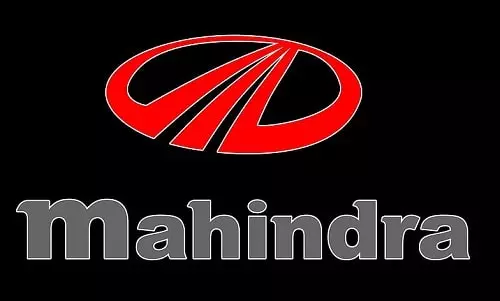Mahindra & Mahindra, a leading name in India’s automotive and agricultural machinery sectors, is synonymous with quality, innovation, and reliability. From utility vehicles and passenger cars to tractors and electric vehicles, Mahindra has established itself as a household brand catering to the diverse needs of Indian consumers. Owning a Mahindra franchise is an attractive opportunity for entrepreneurs looking to enter the thriving automobile or agricultural equipment markets.
This article provides a detailed analysis of the Mahindra franchise cost, requirements, and profitability in India, making it easier for aspiring franchisees to make informed decisions.
Why Invest in a Mahindra Franchise?

India’s automobile and agricultural equipment markets are growing steadily, driven by rising incomes, urbanization, and increasing demand for personal mobility and mechanized farming. Mahindra’s diverse product portfolio and strong market presence make it a lucrative franchise opportunity. Here are the reasons why investing in a Mahindra franchise is a smart choice:
- Established Brand Reputation: Mahindra is one of the most trusted brands in India, offering quality products with innovative designs and robust performance.
- Diverse Product Range: The brand caters to multiple sectors, including utility vehicles, electric cars, SUVs, tractors, and farm machinery.
- Growing Market Demand: With increasing mechanization in agriculture and rising personal vehicle ownership, Mahindra products enjoy consistent demand.
- Comprehensive Support: Mahindra provides extensive support in training, marketing, and operations to ensure the success of its franchise partners.
- Sustainability Focus: The brand’s investment in electric vehicles and eco-friendly technologies aligns with future market trends.
Mahindra Franchise Cost in India
Opening a Mahindra dealership involves significant investment due to the large-scale infrastructure required for sales, servicing, and inventory storage. The total cost depends on whether the dealership focuses on automobiles, tractors, or farm equipment. Below is a detailed breakdown of the costs involved:
1. Initial Franchise Fee
The initial franchise fee for a Mahindra dealership typically ranges between ₹10 lakh and ₹30 lakh, depending on the type of dealership (automobile, tractor, or electric vehicle) and the location. This fee grants franchisees the license to operate under the Mahindra brand, along with access to its products, systems, and support.
2. Infrastructure and Setup Costs
Setting up a Mahindra dealership requires substantial investment in land, construction, and equipment to meet the brand’s global standards. The costs vary by dealership type:
- Automobile Dealership (SUVs, Cars, Electric Vehicles):
- Land Requirements: A minimum area of 15,000 to 30,000 square feet is required for the showroom, service center, and parking.
- Setup Costs: ₹2 crore to ₹5 crore for constructing and designing the showroom and service center.
- Tractor and Farm Equipment Dealership:
- Land Requirements: A minimum area of 10,000 to 15,000 square feet is required for the display and servicing of tractors and implements.
- Setup Costs: ₹1 crore to ₹2 crore.
- Electric Vehicle Dealership:
- Land Requirements: A smaller area of 5,000 to 10,000 square feet is needed for the showroom and charging stations.
- Setup Costs: ₹1 crore to ₹2 crore.
3. Inventory and Stock
An initial inventory investment is required to stock vehicles, tractors, or farm equipment. This cost depends on the dealership type:
- Automobile Dealership: ₹2 crore to ₹5 crore
- Tractor and Farm Equipment Dealership: ₹1 crore to ₹3 crore
- Electric Vehicle Dealership: ₹1 crore to ₹2 crore
4. Licensing and Permits
Franchisees must obtain various licenses and permits to operate, including:
- Trade License: ₹50,000 to ₹1 lakh
- GST Registration: ₹20,000 to ₹50,000
- Pollution Control Board Clearance: ₹50,000 to ₹1 lakh
5. Marketing and Advertising Contribution
Franchisees contribute a percentage of their revenue (typically 2% to 4%) toward Mahindra’s marketing campaigns, ensuring consistent brand visibility.
6. Working Capital
A reserve of ₹50 lakh to ₹1 crore is recommended for managing day-to-day operations, including staff salaries, utilities, and inventory replenishment.
Total Investment
Considering all factors, the total investment required to establish a Mahindra dealership in India typically ranges between:
- Automobile Dealership: ₹4 crore to ₹10 crore
- Tractor and Farm Equipment Dealership: ₹2 crore to ₹5 crore
- Electric Vehicle Dealership: ₹1 crore to ₹3 crore
Requirements for Opening a Mahindra Franchise
To qualify as a Mahindra franchisee, potential investors must meet specific eligibility criteria:
- Financial Stability:
- Franchisees must demonstrate the ability to invest in the business and sustain operations during the initial phase.
- Prime Location:
- The dealership must be located in a high-traffic area, such as industrial zones, urban centers, or agricultural hubs.
- Retail Space:
- A minimum area of 10,000 to 30,000 square feet is required, depending on the dealership type.
- Business Experience:
- While prior experience in the automobile or agricultural industry is advantageous, it is not mandatory.
- Commitment to Brand Standards:
- Franchisees must adhere to Mahindra’s operational guidelines, customer service protocols, and showroom design standards.
Profitability and Return on Investment (ROI)
The profitability of a Mahindra franchise depends on factors such as location, customer demand, and operational efficiency. Here’s an overview:
- Revenue Potential:
- A Mahindra automobile dealership can generate annual revenue of ₹20 crore to ₹50 crore.
- Tractor and farm equipment dealerships can achieve revenue between ₹10 crore and ₹30 crore annually.
- Profit Margins:
- Vehicle sales offer margins of 5% to 10%, while servicing and spare parts contribute higher margins of 20% to 25%.
- Break-Even Period:
- Most Mahindra dealerships achieve break-even within 3 to 5 years, provided they are efficiently managed.
- Recurring Revenue:
- Service centers and spare parts sales ensure steady and recurring income.
Advantages of Owning a Mahindra Franchise
- Trusted Brand: Leverage Mahindra’s strong reputation and customer trust.
- Diverse Revenue Streams: Earn from vehicle sales, servicing, and spare parts.
- Comprehensive Support: Benefit from Mahindra’s extensive training, marketing, and operational guidance.
- Future-Ready Products: Tap into the growing demand for electric vehicles and advanced agricultural machinery.
Challenges to Consider
- High Initial Investment: The significant upfront cost may be a barrier for small-scale investors.
- Market Competition: Mahindra dealerships face competition from brands like Tata Motors, Maruti Suzuki, and Hero.
- Location Dependency: The success of the dealership heavily relies on its location and market potential.
Conclusion
Investing in a Mahindra franchise in India is a highly rewarding opportunity for entrepreneurs looking to enter the automobile or agricultural equipment sectors. With its strong brand reputation, diverse product portfolio, and robust support system, Mahindra provides a reliable and scalable business model. However, prospective franchisees should carefully evaluate the costs, location, and market conditions before committing to the investment. By adhering to Mahindra’s operational standards and focusing on customer satisfaction, franchisees can build a successful and profitable business in this growing industry.
Anantha Nageswaran is the chief editor and writer at TheBusinessBlaze.com. He specialises in business, finance, insurance, loan investment topics. With a strong background in business-finance and a passion for demystifying complex concepts, Anantha brings a unique perspective to his writing.


